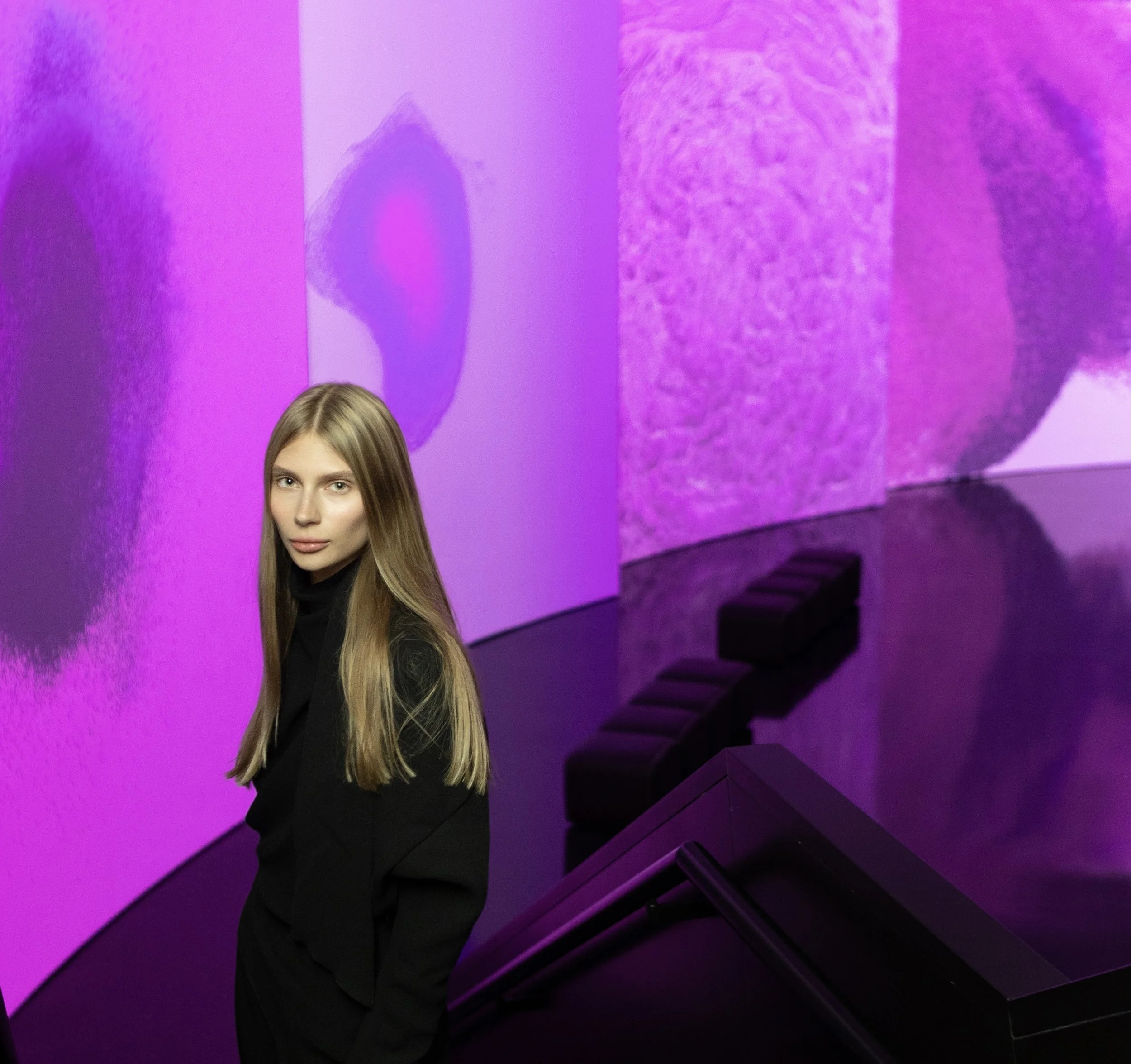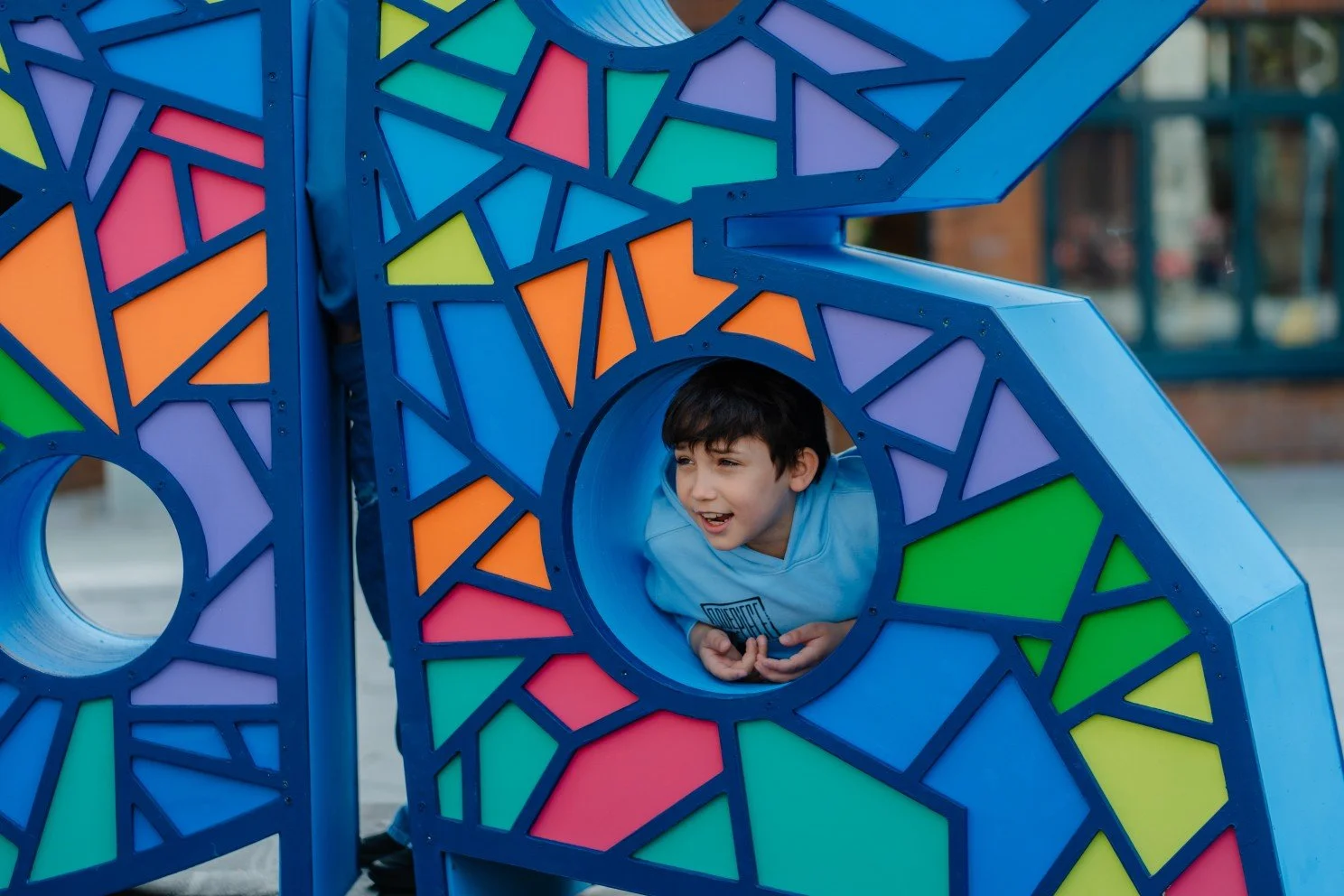10 Questions with Tianyi Zhang
Tianyi Zhang (b. 1995, Hunan, China) lives and works in Shanghai, China, and Los Angeles, USA. She earned an MFA (’19) in Photographic and Electronic Media from the Maryland Institute College of Art (MICA) and a BFA (’17 & ’14) in Studio Photography and Design, respectively, from the Central Academy of Fine Arts (CAFA) in Beijing, China. She has been awarded the MacDowell Fall 2024 – Winter 2025 Fellowship, nominated for the Ashurst Emerging Artist Prize in London, and won the First International Film Festival in Xining. Her works have been screened and exhibited internationally, including at Elijah Wheat Showroom, The Plaxall Gallery, and Anthology Film Archives in New York, Brea Gallery in California, and The New Art Fest in Lisbon.
Tianyi Zhang - Portrait
ARTIST STATEMENT
Zhang is a multidisciplinary artist working in digital film, installation, animation, performance, and social media. Her work explores patterns of behavior and communication within our over-saturated media and social environment. Through interactive performances, often featuring her own portrait, Zhang emphasizes simple habitual gestures to examine the connection between private and collective experience, cultural pressures, expectations, and identity. Recently, she has been focusing on hand gestures and the role of physical labor in media production and the digital world. In her new project, Nursery, Zhang created a mixed-media installation featuring sculptures of gloved hands with elaborate nails, grass, and electronic screens. This project explores issues of female labor and the digital illusions created by cheap online labor.
99 AGREEMENTS, Performance based video installation, 2019 © Tianyi Zhang
INTERVIEW
Can you share your journey from studying at CAFA in Beijing to earning your MFA at MICA in the United States? How have these educational experiences shaped your artistic practice?
In 2013, I began my studies at the Central Academy of Fine Arts after more than ten years of traditional Eastern art education, which was rigorous and conservative. While I deeply valued this learning opportunity, I also put a lot ofpressure on myself by being overly concerned with how others perceived me. Realizing that this restraint was limiting my creativity, I chose to major in photography in my second year, aiming to relax and break free from my old creative habits. Graduating from university marked a new beginning for me as I shifted from creating for others to creating for myself. During my time pursuing a graduate degree in the United States, I learned to appreciate the differences between individuals and cultures and to find common ground within diversity. This experience greatly influenced my artistic work and life, helping me to use my personal perspective to evoke connection with others and enabling me to live and work more independently across different cultural environments.
Your work spans various media, including digital film, installation, animation, and performance. How do you decide which medium to use for a particular project?
I am open to all forms of art and am willing to experiment with new mediums as long as they suit my conceptual work.My creations usually expand around a central theme. In practice, I choose the most suitable medium based on the needs of each project.
Language Class, Performance & Digital Video collection, 2018 © Tianyi Zhang
Your artist statement mentions exploring patterns of behavior and communication in an over-saturated media environment. Can you elaborate on how you address these themes in your work?
Before discussing this topic, I would like to briefly talk about my upbringing and the inspiration behind my work. I grew up in a community affiliated with a government institution, where everything was highly uniform. Prisoners would march in line for labor reform, and government employees wore identical uniforms, working in the same offices with fixed schedules. The community provided schools, canteens, and recreational facilities, and people engaged in similar activities at set times. Nearly everyone's life was remarkably similar. I was no exception, attending school in the same blue uniform as all the other children. During public lessons, teachers would ask us to raise our hands collectively, but privately, they told us to raise our left hand if we knew the answer and our right hand if we didn't. From that time, I became very sensitive to this kind of uniformity and full of questions. Most of my work is rooted in these childhood memories and doubts. Although collective behaviors have changed with the shifting media and environment, I believe their essence remains the same.
In my work, I often recreate these behaviors through interactive performances. For example, in my piece Language Class, I played the role of a language teacher, teaching children to say "I am great" in different languages. Although the children didn't fully understand the content, most of them eagerly followed along. To me, it was a performance, but it also reflected the real dynamics of a classroom. None of the children knew I was an artist, and I hadn't instructed them to act in any particular way. This repetitive, somewhat absurd process reflected the relationship between identity and behavioral conditioning.
In your interactive performances, you emphasize habitual gestures. What is the significance of these gestures, and how do they connect you with your public?
In my work, I often present repetitive, habitual actions such as nodding, clapping, raising hands, or swiping fingers. These simple gestures carry complex meanings and implications, which is what I focus on the most.
For example, in 99 Agreements, I portrayed 99 different women, each saying "yes" in various scenarios. While the word"yes" seems simple, its meaning in different contexts goes beyond agreement; it can be diverse, complex, and even dangerous. Sometimes, it reflects unconscious compliance, other times excitement, or even rejection and resistance. I don't need to explicitly emphasize the connection with the audience—when I say this word in different situations, I believe everyone can find resonance in their own life experiences.
99 AGREEMENTS, Performance based video installation, 2019 © Tianyi Zhang
NOTHING BUT DANCE, Interactive Video Program, 2020 © Tianyi Zhang
You also largely use self-portraits. What do they represent for you, and how does using your persona help you address universal themes?
Yes, in my work, I often use personal portraits and performances. Whenever I create, the core of the piece must be something I have personally experienced, deeply resonated with, and that is closely connected to me. To move others, I must first be moved myself. Therefore, my body, emotions, and experiences become the most authentic and vivid materials for my creations.
As you mentioned, you recently shifted your focus to hand gestures and physical labor in media production. Can you discuss what inspired this interest and how it is reflected in your work?
My earliest thinking for this project began while working on Fake Idol. To create a convincing idol character, I set up a social media account and asked friends to like and comment on it. During the process, I became interested in online "fake fans" and even infiltrated their groups to observe how they charge and what kind of content they boost. This made me realize that in today's digital world, people are both consumers and producers in this surreal factory. In my new work Nursery, I use hands wearing rubber gloves and decorated with fancy nails to represent the modern spirit of refinement, pressure, and entertainment obsession. These hands are tools for digital production and consumption alike.
ZELFFIE, Crossing-media performance, 2018-2020 © Tianyi Zhang
You've been nominated for prestigious awards like the Ashurst Emerging Artist Prize. How do such recognitions impact your career and your approach to art?
These art festivals always bring together a group of talented artists to share their work and creative insights with each other. The exchange and interaction during these moments are the most important things.
Your work reflects on current themes, and at the same time, you employ digital mediums In your production. What do you think of the recent surge in AI and AI-generated content? Do you see this new technology as a threat or more like an opportunity?
I hold a conservative view on this issue. While AI has undoubtedly brought convenience to artists and designers, I believethe power of art lies in the irreplaceable human touch. Whether it's painting, sculpture, or film, every brushstroke, mark, or frame carries human thoughts, emotions, and states of being. In a world filled with polished, cold, and refined products, I hope that these precious works of art, which still retain human warmth, won't be overly encroached upon.
NURSERY, Mixed media installation, 2023 © Tianyi Zhang
NURSERY, Mixed media sculpture, 2024 © Tianyi Zhang
NURSERY, Mixed media sculpture, 2024 © Tianyi Zhang
How do you see your work evolving in the coming years? Do you have any theme or medium you would like to experiment with?
I'm currently continuing to develop the Nursery series and will experiment with more diverse materials based on the concept, including mechanical installations and found objects. At the same time, I'm working on a more personal animated short film, which may differ in its approach and expression compared to my previous works. However, I believe that occasionally breaking out of my usual creative habits might bring some unexpected surprises.
Lastly, what are you working on now? Are there any new projects or exhibitions you want to share with our readers?
In addition to my personal creations, I am also preparing to run an art space. What fascinates me most about art is its inclusivity and diversity. As an artist, I enjoy the creative process and benefit from sharing and appreciating the works of others. Through this space, I hope to bring a relaxed and diverse artistic perspective to more people.
Artist’s Talk
Al-Tiba9 Interviews is a promotional platform for artists to articulate their vision and engage them with our diverse readership through a published art dialogue. The artists are interviewed by Mohamed Benhadj, the founder & curator of Al-Tiba9, to highlight their artistic careers and introduce them to the international contemporary art scene across our vast network of museums, galleries, art professionals, art dealers, collectors, and art lovers across the globe.
























